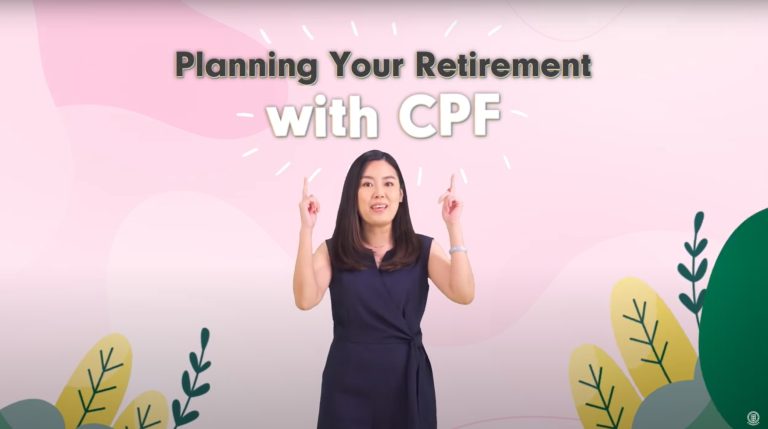Cultivating Financial Literacy: Seeds of Saving and Wisdom
Have you ever found peace in creating a vibrant terrarium? Just like nurturing plants, ensuring your finances blossom requires care, attention, and a level of consistency. Surprisingly, my journey into both gardening and finance shares a common path. Let me take you through the nurturing process of both, drawing lessons from nature to illuminate the nuances of saving and investing.
The Terrarium Connection: Nurturing Growth
There’s something calming about building a terrarium. It’s a hands-on project, one that invites creativity and thoughtfulness. For me, planting those little green life forms provides a moment of tranquility in a busy day. As I arrange stones, soil, and plants, I find my mind clearing. Isn’t it fascinating how nurturing plants mirrors our efforts in financial planning? Just as we tend to plants, we must care for our finances.
The Calming Effect of Building a Terrarium
When I start a terrarium, I feel a mix of excitement and peace. Each layer represents a careful choice. The process reminds me to slow down. As I pour the soil, arrange the plants, and add decorative stones, I feel present. This focus is similar to what I experience when I take a moment to review my financial goals. It’s all about fostering growth—both for my plants and my savings.
Analogies Between Plant Care and Financial Planning
Plant care and financial management may seem like two different worlds, but they share similar principles:
- Regular Attention: Just as plants need routine watering, your finances require regular check-ins. I make it a habit to assess my budget monthly.
- Consistency: Whether it’s nurturing seedlings or growing savings, consistency is key. I’ve learned to automatically transfer funds into my accounts each month. Think of this as watering your financial garden.
- Long-term Vision: You plant a seed with the hope it will grow into something beautiful. Similarly, when I save, I envision my future—educated children, a comfortable retirement.
The Importance of Consistency in Both Fields
A thriving garden doesn’t grow overnight, and neither do financial goals. It’s essential to commit to consistent habits. For me, setting up automatic transfers into savings accounts was revolutionary. It’s like watering plants without even thinking about it! Just like you wouldn’t neglect your plants, you shouldn’t ignore your finances.
Watching both my plants and savings flourish brings me joy. I remember my early days with money plants—they were easy to care for, and watching them grow fueled my interest in gardening and financial management alike. Each contributes to my sense of calm and control in my life.
So, has anyone else found the connection between nurturing plants and managing finances? It’s a journey worth exploring.
Saving Plans: The Watering Can of Finances
When it comes to managing finances, I like to think of it as nurturing a garden. Just like a plant needs water to flourish, our savings need care and consistent attention. This analogy makes the concept of savings plans feel less intimidating and more relatable. It’s a little bit like watering my nest egg.
1. Paying Yourself First: Automated Savings Strategies
One of the best pieces of advice I can offer is to pay yourself first. This means setting aside a portion of your income before you cover any expenses. Think of it as the first sip of water for your plants. It establishes a routine. I automate transfers of ten to twenty percent of my salary to various savings accounts every month. By doing this, I ensure my savings grow consistently. It’s a simple plug-and-play strategy that works wonders. In fact, why not set it up and forget about it? Make sure these funds are allocated for different goals, like travel, emergencies, or retirement.
2. Setting Long-Term Financial Goals
Establishing clear financial objectives is essential. What are your dreams? Buying a home? Paying for your child’s education? Transitioning to retirement? These goals should motivate your savings strategy. When I was younger, my goals included building a home and saving for my wedding. Now, in my forties, I’m focused on retirement. Reflecting on these milestones provides insight and direction.
- Identify your financial needs.
- Create a timeline for your goals.
- Write them down for accountability.
3. Regular Check-Ins to Assess Your Progress
Just as we water our plants on a schedule, we must regularly assess our financial health. I make it a priority to check in on my financial goals at least quarterly. This practice keeps me accountable. Am I on track? Are there adjustments needed? It’s vital to stay engaged with our finances. Regular check-ups make it feel less daunting. After all, learning from past experiences enhances our planning skills.
With financial literacy, one can utilize free resources to build knowledge. Just as I started my journey with books and online materials, why not plant those seeds within ourselves? The journey to financial literacy is like nurturing a garden. The more we nurture, the more we grow.
In the end, our savings plans will flourish if we admire them regularly. Just as I watch my plants thrive, I see my financial goals evolve. Giving them the right attention is the secret to investment success.
Learning from the Past: Building Financial Resilience
Reflecting on Past Financial Experiences
We all have moments in our financial journeys that stand out. For me, my sudden financial losses in my twenties were pivotal. It was a tough learning experience. But like any challenging situation, it laid the groundwork for growth. I often think, what would I do differently? Revisiting those times has helped shape my current financial habits. Instead of feeling embarrassed, I choose to learn.
Have you ever sat down and thought about your financial mistakes? It’s eye-opening. Reflection allows us to recognize patterns, identify poor decisions, and avoid repeating them. What can we learn from setbacks? First, it’s essential to face those moments bravely. Only then can we build a plan to improve.
Resources for Improving Financial Literacy
Improving financial literacy is empowering. There are countless resources available, many of which are free! Consider exploring:
- Books: Titles such as “Rich Dad Poor Dad” and “The Total Money Makeover” are fantastic starting points.
- Webinars: Many personal finance experts offer free sessions online.
- Financial Blogs: Engaging with community blogs can offer relatable insights.
Like nurturing a garden, the knowledge you acquire needs regular care. Regularly reviewing these resources helps reinforce what you’ve learned. Remember, the more knowledgeable we are, the better decisions we can make.
Building Confidence Through Knowledge
How do we build confidence in managing our finances? The answer lies in knowledge. Every step we take towards understanding our finances boosts our self-esteem. I recall my early days of budgeting; I felt overwhelmed. However, with each month that passed, I became more adept at tracking expenses and setting saving goals.
Just as I care for my money plants—ensuring they’re watered and nurtured—I have learned to cultivate my financial knowledge. It’s about practice and persistence. When we equip ourselves with information, we reduce anxiety around financial decisions. That confidence is invaluable.
Let’s embrace our past, learn from it, and look forward to a more secure financial future. Taking these steps transforms us into more resilient individuals capable of facing life’s monetary challenges head-on.
The Power of Compound Interest: Nature’s Magic
Understanding how compounding works is essential if we want to build wealth over time. It’s similar to nurturing a garden. Just as plants require regular care to thrive, our savings need consistent contributions to grow. But why is that important? When we save regularly, we take advantage of interest that compounds. This means that the interest we earn also earns interest over time. Fascinating, right?
Practical Example of Long-Term vs. Short-Term Savings
Let’s consider a simple yet powerful example:
- If you save $50 a month starting at age 25, by the time you reach 65, you could have about $58,000 if your savings earn a 4% annual interest rate.
- However, if you wait until age 35 to start saving, you’d need to save about $85 per month to reach the same goal. That’s a significant difference!
This highlights the power of starting early. It’s like planting a seed today and enjoying the shade of a tree many years later.
Encouraging Financial Education from a Young Age
It’s crucial to instill the values of saving early on – especially for our kids. Learning about finances doesn’t have to be complicated. I believe just like learning to care for a plant, understanding money management can be taught with simple steps. We can start with basic concepts.
- Teach them the benefits of saving.
- Explain how compound interest works in easy terms.
- Encourage regular contributions to savings accounts.
Just as I prioritize regular top-ups to my CPF account for that four percent interest, children can be taught to regularly add to their own savings.
| Age Started Saving | Monthly Savings | Total Savings by Age 65 |
|---|---|---|
| 25 | $50 | $58,000 |
| 35 | $85 | $58,000 |

Now, imagine your savings growing over time like a tree flourishing under the right conditions. The earlier you start, the greater the potential growth.
By encouraging our children to engage with financial concepts, we are not just preparing them for their future. We’re giving them crucial tools for life! This is something I truly value as part of my journey towards financial literacy.
Embracing Financial Calmness: The End Game
When I think about financial calmness, a sense of contentment washes over me. Financial calmness means to be contented with what I have, have a good source of income, and to be able to spend wisely. It’s not about being wealthy; rather, it’s the peace of mind that comes from knowing I can handle my expenses and still have a little left for savings. This journey toward financial tranquility isn’t always easy, but it’s certainly achievable with thoughtful strategies and consistent practice.
Defining Financial Calmness
What does financial calmness mean to you? For me, it’s about creating a balanced life through financial planning. This involves knowing what I have, being aware of my spending habits, and making informed decisions. Much like taking care of a garden, nurturing my finances is an ongoing process. I believe that the foundation of financial calmness lies in three key areas:
- Awareness: Understanding my financial situation is crucial. It allows me to identify where I can cut back or invest more.
- Control: It’s essential to exercise control over my spending and savings habits.
- Future Planning: I constantly remind myself to think ahead. Having a savings plan for emergencies gives me peace of mind.
Strategies for Achieving Financial Peace
Achieving financial peace requires a clear strategy. Here are some of the tactics I use:
- Create a budget: One of the simplest yet most effective tools. I track my income and expenses diligently.
- Set savings goals: Whether it’s for retirement, a vacation, or an emergency fund, knowing what I’m saving for gives me focus.
- Invest wisely: I make sure to educate myself on investment options, as this can amplify my savings over time.
The Importance of Wise Spending and Saving
Wise spending is, without doubt, a cornerstone of financial calmness. Spending should align with my values and goals. This means prioritizing needs over wants. I often ask myself: “Will this purchase contribute to my happiness or financial well-being?” This simple question helps clarify many choices.
Savings also play a crucial role. When I make it a routine to set aside a part of my income, I’m essentially watering my financial garden, allowing it to blossom over time. As I’ve learned, even small, consistent contributions can lead to substantial growth, thanks to compound interest.
“Financial calmness means to be contented with what I have, have a good source of income, and to be able to spend wisely.”
In conclusion, pursuing financial calmness is a valuable journey. It requires awareness, strategic planning, and disciplined habits. We can achieve financial peace of mind by defining personal financial goals, implementing sound budgeting practices, and embracing wise spending. Ultimately, financial calmness is within our grasp, promising a balanced life filled with security and tranquility.





